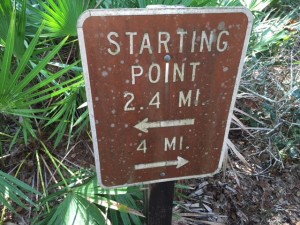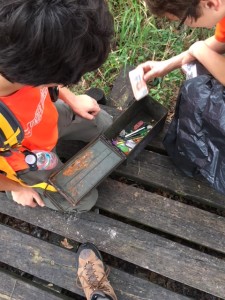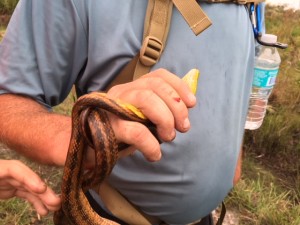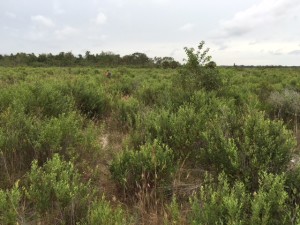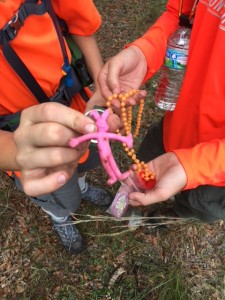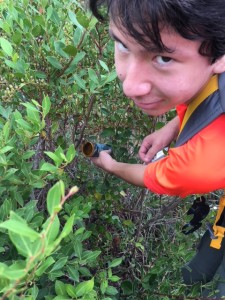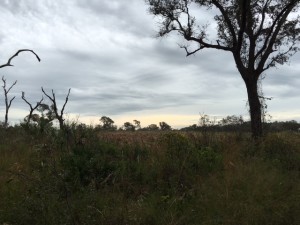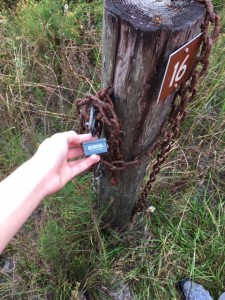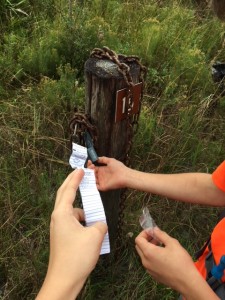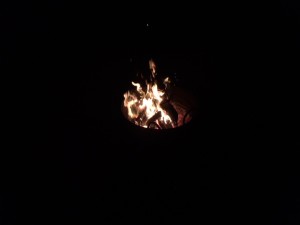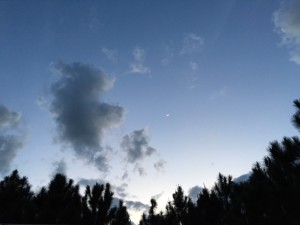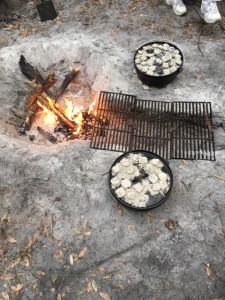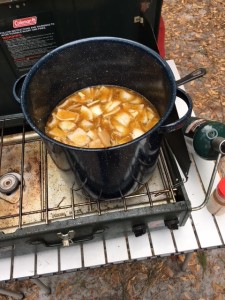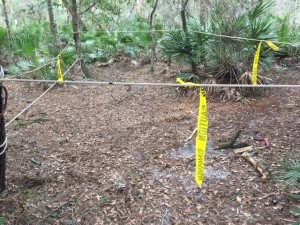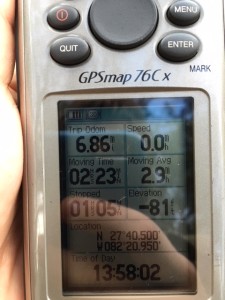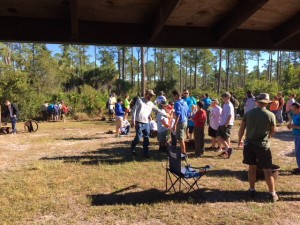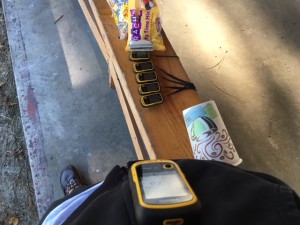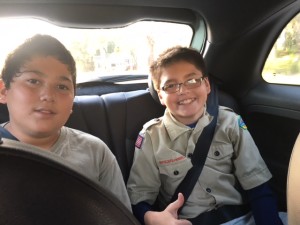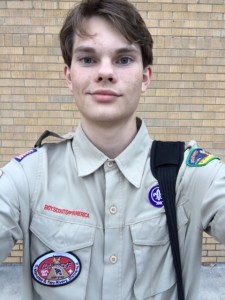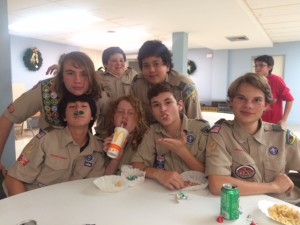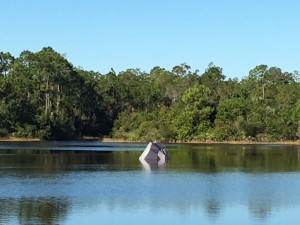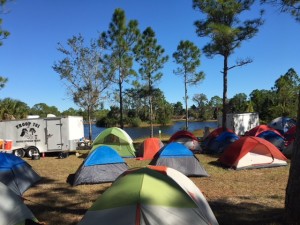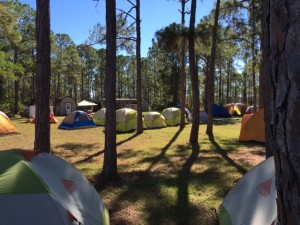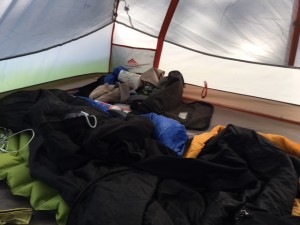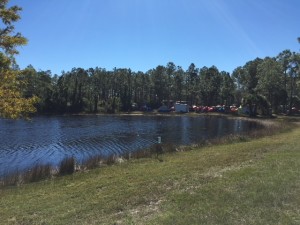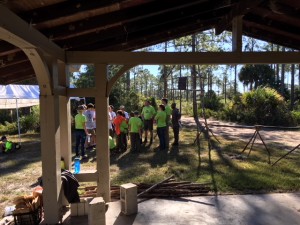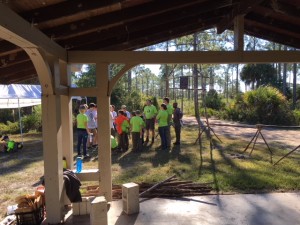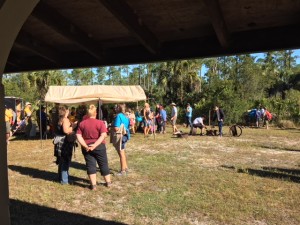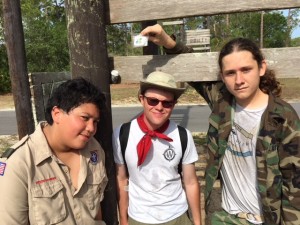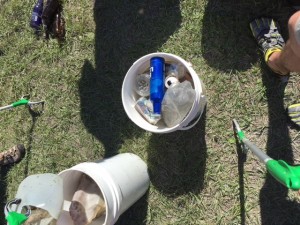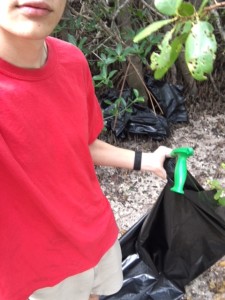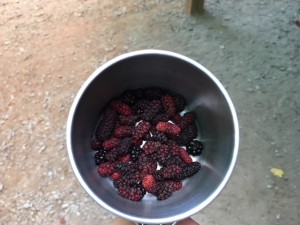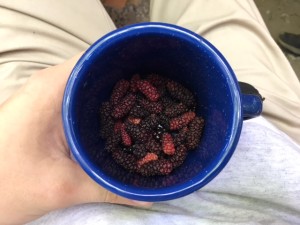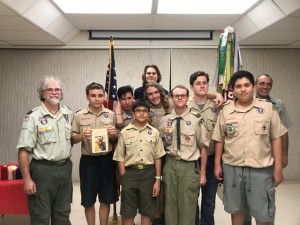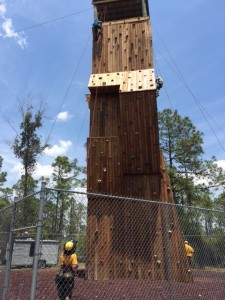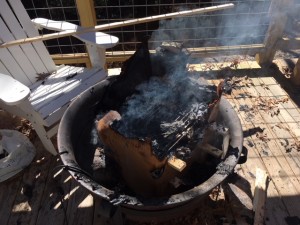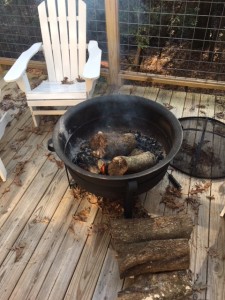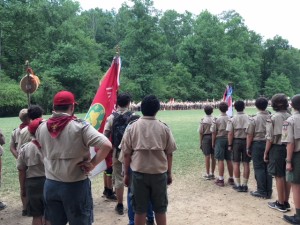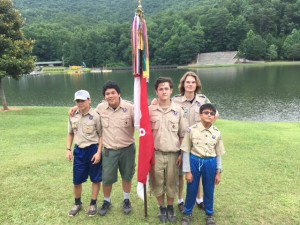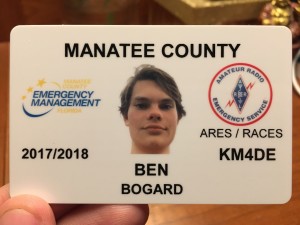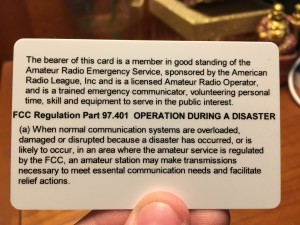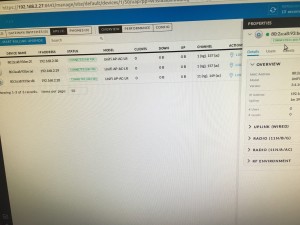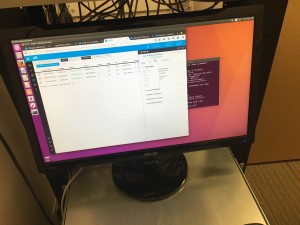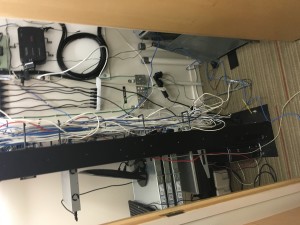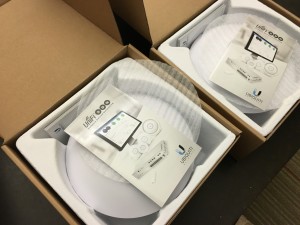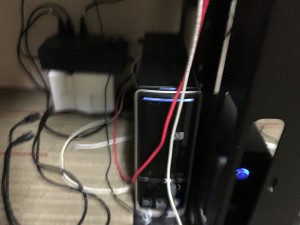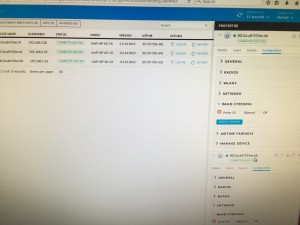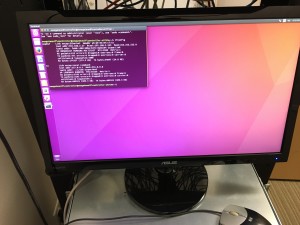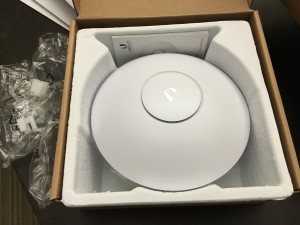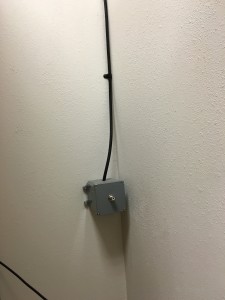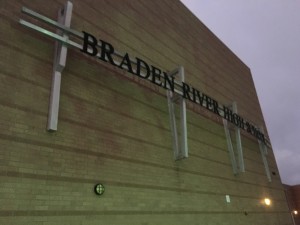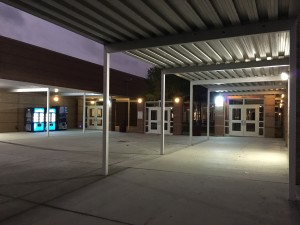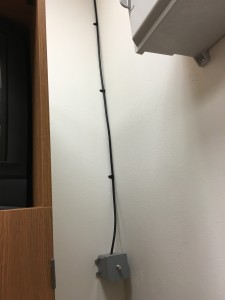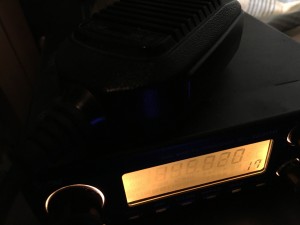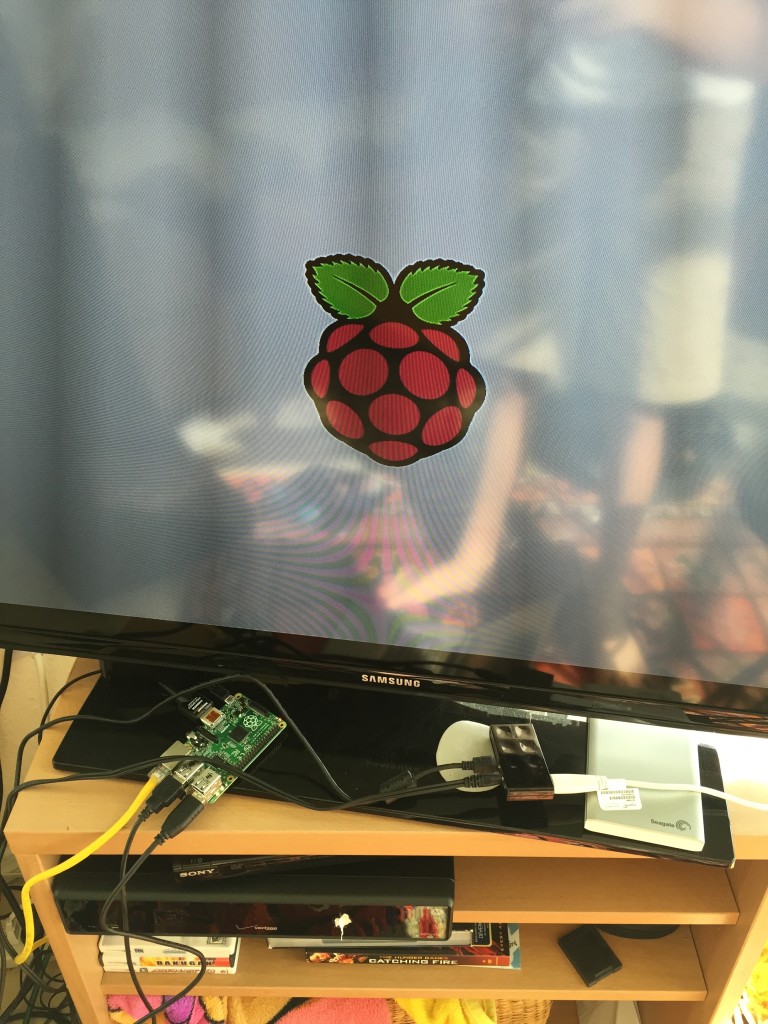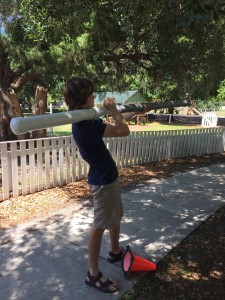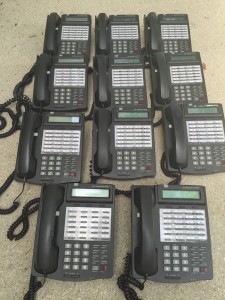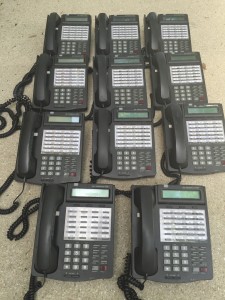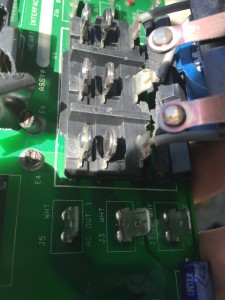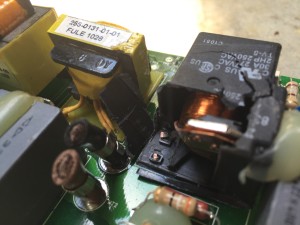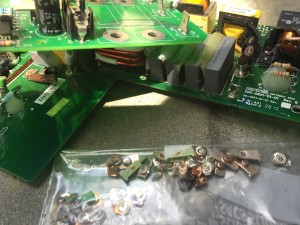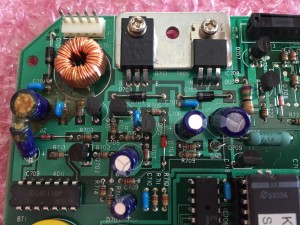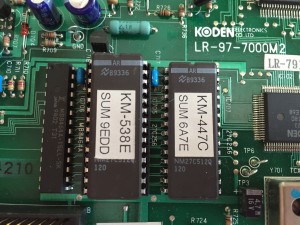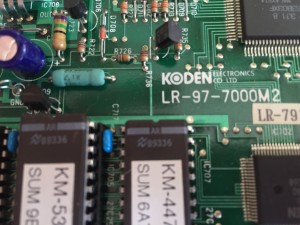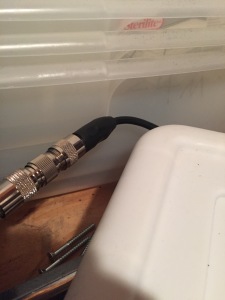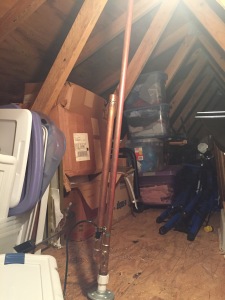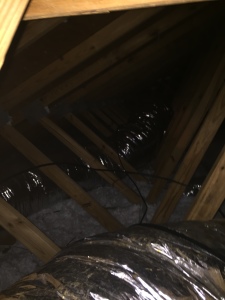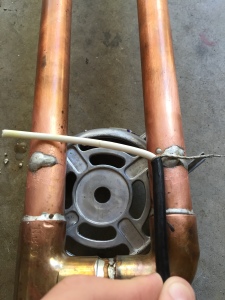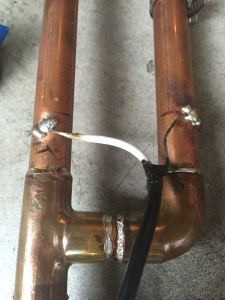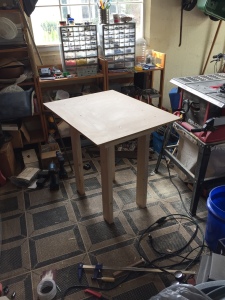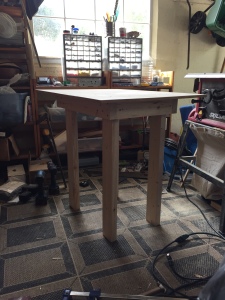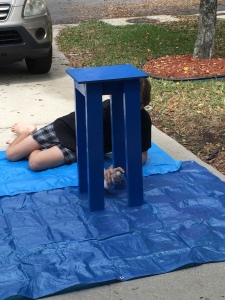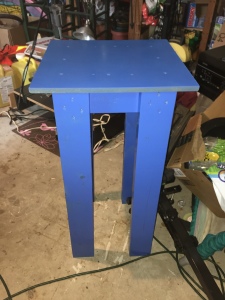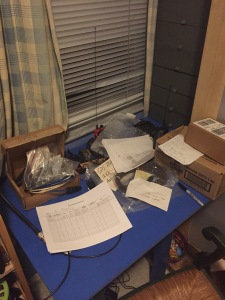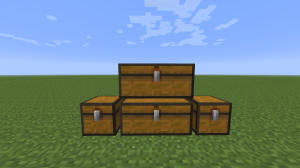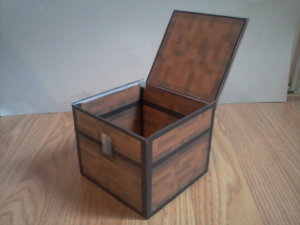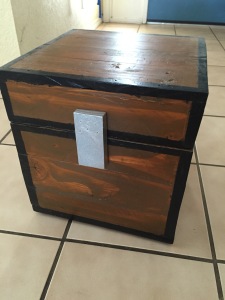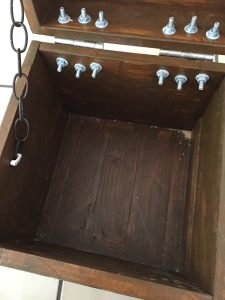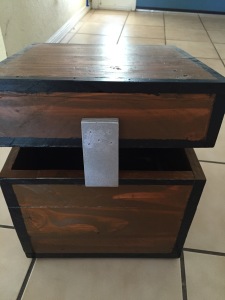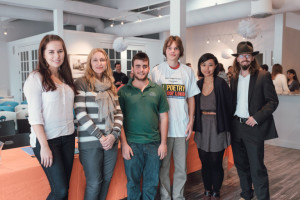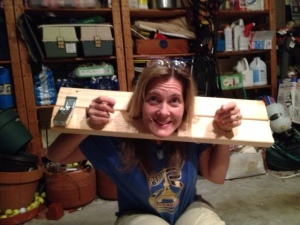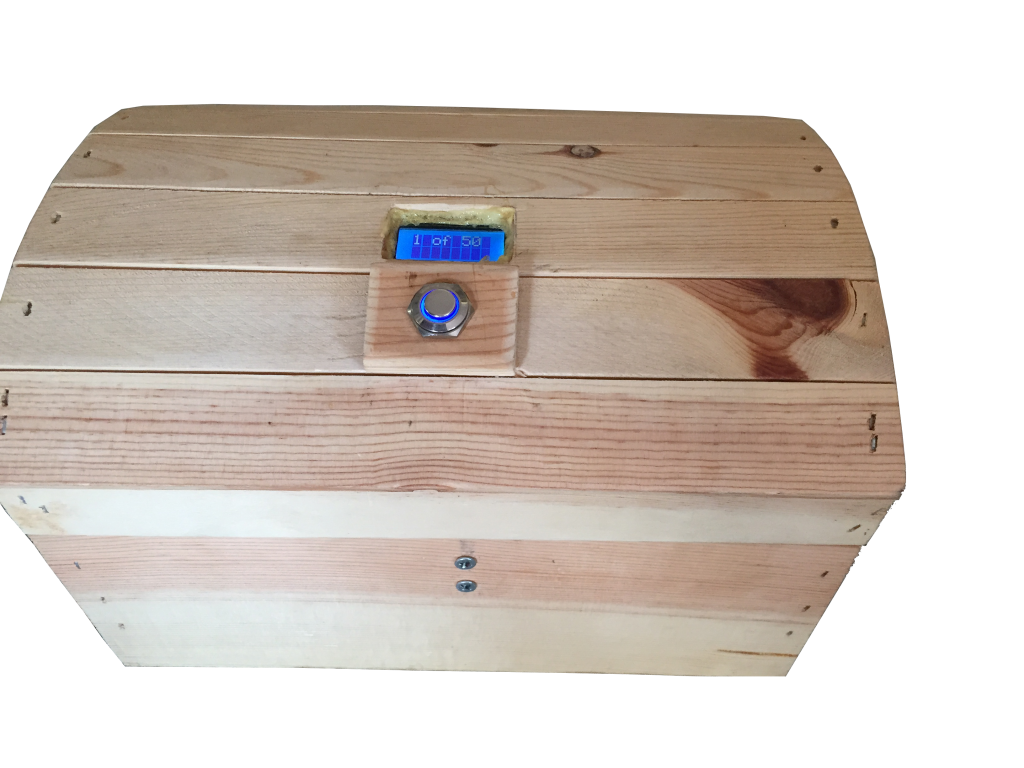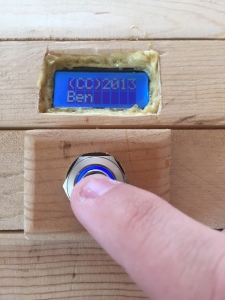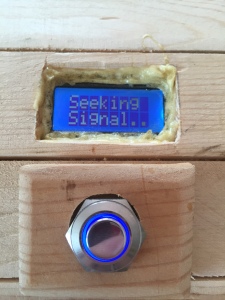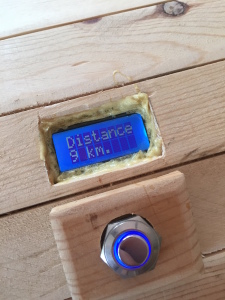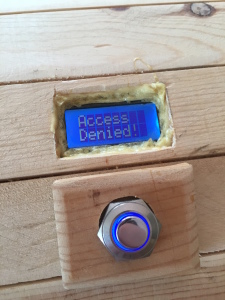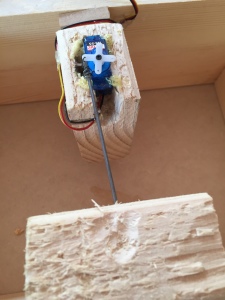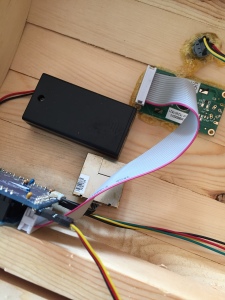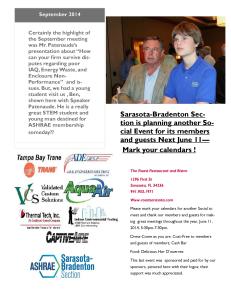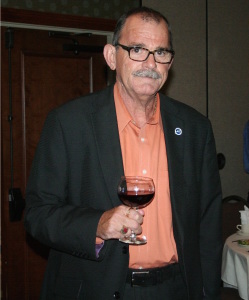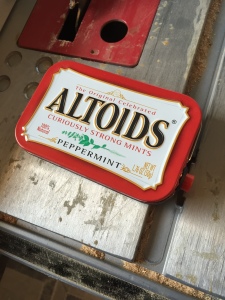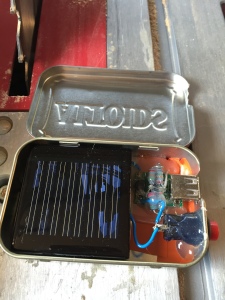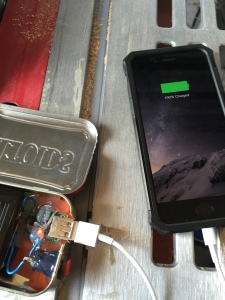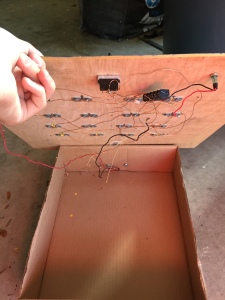|Scouting Photos| |CAS Reflection: Silver Refining 10/17/17| |CAS Reflection: Leadership Growth 10/3/17| |CAS Reflection: CAS Project Idea 9/4/17| |CAS Reflection: ARES 8/22/17| |NewGate School Technology Consulting and Setup| |ARES Hurricane Matthew Shelter Activation| |Raspberry Pi NAS| |Tennisball Air Cannon| |Ebay Phone Sale!| |Giant Transformer Future Project| |Selling Old Business Phones| |Salvaging Silver from Scrap| |Trying to Sell LORAN Circuitboards| |J-Pole Antenna| |Homemade 2×4 Desk| |Minecraft Wooden Chest| |Ham Radio Update 1| |Poetry Out Loud 2015| |Stocks| |Reverse Geocache| |ASHRAE Meeting| |Solar Powered Phone Charger| |United Systems Internship| |Electronic Slot Game|
Hey everyone,
I just figured I’d share some of my scouting pictures with you all! Long story short, my scouting career started when I was 15 (almost 16) and I met someone who was in scouting through one of the amateur radio clubs I’m a member of. His name was Ken Settlemyer and he was an electrical engineer and amateur radio operator who also happened to be Scoutmaster of a local troop. Ken invited me to join and during my first meeting I was elected SPL (senior patrol leader) which was surprising but in hindsight a good way to get me excited, interested and keep me coming back! I had a lot of fun in Scouts but unfortunately was never able to get Eagle as there wasn’t enough time for me to get it before I turned 18 as there are minimum times that one must hold a given rank in order to get Eagle. After I turned 18 I became an ASM (Assistant Scoutmaster) with the troop and when Ken injured his back I was asked to take the troop to Summer Camp in North Georgia! So I drove a large truck (first time driving a truck) with a 22′ trailer (first time towing a trailer) about 10.5 hours north from my home in Florida up to Camp Rainey Mountain where the troop and I had an absolute BLAST at summer camp. Overall scouting was an extremely worthwhile experience and it was a fun way to add activity to my IB CAS. Anyway, I hope you enjoy the culmination of my Scouting pictures!
Best,
Ben
CAS Reflection: Silver Refining 10/17/17
Creatively, I have been thinking about one of my ongoing projects. One of the things that I do for fun is scrap electronics. From scrapping, I get silver relay contacts out of electrical components called relays. I have been trying to figure out how to refine the silver from the relay contacts for a while now and have previously attempted to dissolve the copper from the relay contacts using a solution of hydrochloric acid and hydrogen peroxide. This did not work the last time and instead produced chlorine gas which was not what was intended. I thought about my methods I used and have devised a new process to try. I hope to add less hydrogen peroxide to the solution and warm the solution. This would allow the chemical reaction to take place faster and hopefully would give me the desired result. I could then dissolve the impure silver with nitric acid and refine it using sodium chloride. This project would allow me to hone my chemistry skills and to have fun experimenting.
CAS Reflection: Leadership Growth 10/3/17
One of my CAS activities is service based and is with the Boy Scouts of America. I am the Senior Patrol Leader (SPL) of Troop 8 and have been for 2 years now. Since I joined the troop I have been the SPL which is the youth troop leader. One of the things that this activity has helped me to improve is my leadership skills. Since I have joined the troop I have become a much better leader. Through the help of my scoutmaster, I have gained a much higher tolerance for loud, noisy children and have worked heavily on my ability to stay calm under pressure. I found it frustrating at first when we would go to a campout or a service project and every 15 minutes the other members of my troop would need redirection. We would be cleaning up a beach or trying to build a fire and each person would slowly get off task and eventually, everyone would be playing a game or goofing off. Even though the exact same thing happens now, I have a much more calm and collected and constructive response to the other kids than I used to. My scoutmaster and I would do reflective sessions after campouts and activities with us to try to think about what we did that worked well and what we did that didn’t work at all. For me personally, he would take time to discuss leadership strategies and methods that could work better. This, over time, really helped me to improve my leadership skills tremendously.
CAS Reflection: CAS Project Idea 9/4/17
I love the idea of a CAS project!
We moved to a new building during the middle of my junior year and the building had four garden beds that were completely overrun with weeds and are missing dirt. For my CAS project I want to team up with Mikayla to turn one or two of the medicinal garden beds into an herbal tea bed. research shows that tea can help students study better and if we were to offer the tea to the students at school for free this would constitute the service aspect of CAS. Also the creativity and action components are covered because designing and planning an herbal tea garden is creative and actually planting and caring for a garden is physical activity. I am an avid tea drinker myself so I feel that this would connect with me on a personal level. The first steps to getting this up and running would be to prepare the garden beds with more dirt and additionally setting up some sort of watering system so that the plants could be watered while we are out of school. Otherwise, in the hot summer sun, they would surely die. After the herbs were done growing they could be dehydrated and used to make tea. One idea that we have also been throwing around was that of planting the actual tea plant. This would allow us to make an herbal green tea mix.
-Ben
CAS Reflection: ARES 8/22/17
Hello!
So today at school we had a CAS meeting and discussed the importance of CAS reflections. This evening I went to one of my ham radio meetings for a group called ARES and I figured I’d take some time right after to write a reflection on my experience in ARES as a whole and how it has affected me.
I personally feel that my participation in ARES is one of the most amazing experiences as it related to the IB learner profile and to CAS as it touches on many aspects of the learner profile as well as all three CAS components.
ARES stands for Amateur Radio Emergency Services and it’s goal is to provide our county (Manatee) with emergency communications in case of a natural disaster (primarily hurricane). In ARES we learn how to be clear, concise and effective communicators over the radio. We become knowledgeable and principled as we learn the FCC Part 97 rules that govern our operation and learn how to effectively follow them. Ham radio in general allows you to communicate with people all over the world, exposing you to people and countries from across the globe, fostering open-mindedness and globalization.
Communicators + knowledgeable + principled + open-minded is a pretty good start, but in ARES we also plan events known as “field day” whereby I facilitate planning an out door 48 hour event where we practice communication with people all round the world for fun and points. We plan a potluck and fun activities and consequently my creative side gets some exercise. Every year ARES acts as emergency communicators for the Saint Stevens Falcon 5k race, where we serve them by monitoring the 5k runners and providing status updates to EMS and police if necessary. One activity I did last race was run the entire thing with my radio providing spotting for the last person in the race group. Last year we had one older man who had a heart attack on top of a bridge that the race traverses over and his heart actually stopped. Luckily there was a ham operator from ARES there who was a nurse and he revived the man and we called emergency services over the radio. I serve in other ways by operating a radio during county wide emergency disaster training programs and monitoring for severe weather through another program called Skywarn (more on that in another reflection).
At tonight’s meeting I received my ARES ID card and have posted a picture of that card below as evidence of this activity:
My new ARES ID (my picture is sooo bad)
The backside of the card- interesting info there
This was what tonight’s meeting looked like
One other thing that we as ARES members do is JOTA. JOTA stands for Jamboree on the Air and is an activity where my worlds collide. I am the senior patrol leader for Boy Scout Troop 8 at the time of writing this (I’ll soon become an adult leader at age 18) and I play a double role in this event because JOTA is an event where local ham organizations share amateur radio with as many scout troops as possible in a day long “jamboree”. I facilitate both sides of the equation, serving my troop by organizing the guys for the camp out and by setting up radios, antenna, and lesson plans on the ARES side. JOTA is coming up very soon and I really look forward to participating in it agin this year 
That’s all for now 
-Ben (yay I’m a senior now)
NewGate School Technology Consulting and Setup
Recently, my school, NewGate bought a larger and newer campus to try to expand all of its programs. This building used to be a cancer support center but was abandoned (bank repossession) following the bankruptcy of the occupying charity.
I was called in to make the internet work. I donated hours of time over the span of 5+ weeks investigation the system in place, organizing technology, setting up wireless access, creating servers, installing WiFi access points, advising, and troubleshooting. What I ended up creating was a network that consisted of a router/gateway, control server (running Ubuntu and Unifi software) and a set of 6 WiFi access points. One of the most difficult aspects of this project was first making sense of the already “established” network. The IT room that they had was a giant mess of ethernet cables, unnecessary hardware and locked servers that first had to be assessed and dealt with before any work even began.
One one day I even stayed on campus working on the system until 11pm.
This was helpful to my school as it saved them tons of money and I learned a ton throughout the process and had fun providing a service to my school that gives so much to me.
ARES Hurricane Matthew Shelter Activation
Hey Guys!
Since I live in West Central Florida, we are often very susceptible to hurricanes. Recently we had a very large (Category 4) hurricane come our way. Hurricane Matthew was a hurricane that affected us here in Manatee County. Matthew was so strong that it required Manatee county to open up some of its shelters. When they announced that they would open the shelters, myself and a few other members of ARES (Amateur Radio Emergency Services) went to go activate the shelters. This entailed going to the shelters, introducing ourselves to the members of the National Guard who were running the shelter and setting up our emergency radios in the radio room. The shelter was at Braden River High School and and the radio room was in room 703. We met a bunch of really nice people who helped us gather the information we needed and prepare for the worst. Luckily, evacuation was never called for and the shelter was never fully opened to county residents but in case it ever was, we now know the procedures.
-Ben
The cable connector for the radio (PL259)
The shelter location (BRHS)
The outside of the shelter
The radio connector again
Location of Radio room (evidently normally used for teacher planning)
One of the VHF/UHF radios we set up there
Raspberry Pi NAS
Recently I’ve been having some data management issues. I have an external 1TB HDD and an internal 256 GB SSD in my laptop and my mom has a multitude of external HDD’s (3-5) and we have tons of flash drives and ugg… It’s as if a bomb went off inside our data and scattered across 13+ storage media. To solve this issue we need a NAS. NAS stands for network attached storage and it’s basically an drive connected to the internet that can be accessed wirelessly or remotely by clients. I followed a YouTube tutorial by Tinkernut to install all of the dependencies for this NAS such as NTFS 3G and Samba. I got everything hooked up and connected and guess what? It worked! It worked, but not very well. I was only seeing speeds of up to 2 or 3 MB/s something was the limiting factor. It could have been the software, could have been the network (though unlikely, we have 75/75 internet) it could have been the USB 2.0 port or the lack of processing power on the part of the Pi. If I had to take a gander I would say that it was mainly the 700 Mhz Pi Processor in conjunction w/ the whopping 256 MB of RAM that did me in. Even i I did get it to work, I still want to add many more drives and connect them in RAID. I am currently planning a real NAS build w/ 16GB + RAM and a decent processor. To that I’m going to add 4 or 6 3TB HDD’s in RAID. Even though the Pi NAS was a failure in my book, it was a good learning experience and I had fun tinkering around w/ it. This project will have to be put on the shelf until the $$$ rolls in to build a good, useable NAS.
-Ben
Tennisball Air Cannon
Hey there! At the end of the 2014-15 school year, right before summer break I finished my physics project. I took applied physics. One of the focuses of applied physics are hands on activities and experimentation. This project was designed to test the effects of different weighted projectiles. The air tank portion of the air cannon was built from schedule 40 PVC and the barrel was made from grey electrical conduit. The conduit had the perfect interior diameter for a standard tennis ball. For each test, the cannon was pressurized to 90 psi, set at a 45 degree angle, loaded, and fired. The only thing that changed was the weight of the projectile. The tennis ball was slit open and lead fishing weights were stuffed into it. I expected the graph of the distance to look like a bell curve with the lightest and the heaviest projectiles going the shortest distance. My results were totally different than what I expected. During my experiment I concluded that for this air cannon, the heavier the tennis ball the farther it would fly. This was quite contrary to the math that stated that the heavier the ball the slower it would go. I think though that if I would have been able to keep increasing the weight of the projectile it would have eventually slowed down. We have a very long driveway on the side of our school, the driveway is about 200m long. The cannon, loaded with a projectile weighing about 500g and pressurized was fired about halfway down the driveway, and it went so far then the projectile was lost in the woods. The tests ended there due to the fact that were were out of fishing weights. I estimate that tennis ball traveled at least 100m. 500g traveling ~40m/s comes out to 400 joules of energy, impressive! I really loved building and testing this cannon, and it was great to be able to do it as a school project. One thing that I learned from this is that theory and practice really can differ quite a bit.
-Ben
Pictures below:
Ebay Phone Sale!
Hi! Just wanted to report on my phone sale success. I received these old, used business phones from a good friend who was replacing the phones in their business. They were going to be thrown out, so they were offered to me for dismantling. After opening one up and finding the parts mildly interesting but not worth taking apart 12 of them, I checked ebay. Ebay returned somewhat profitable results for past sales of similar phones. I decided to “give it a whirl” and put it up for sale expecting $150 MAX. After 7 days listed on ebay, I sold the set of 12 phones for $345.49! I was totally surprised by this outcome and the major thing I learned is to never make assumptions about something you know nothing about. I’m glad that I didn’t tear all the phones down and sell them for $3 of scrap. All in all, check around and try to sell something first before you scrap it! You never know what it could be worth.
Giant Transformer Future Project
I recently received three giant 12v transformers from marine inverters. At work, we scraped three 2.5 kW marine inverters that were too broken to cost effectively repair. The transformers in them were still good and working and so my boss let me keep them. Their primary side accepts ~120v AC 60 Hz and the secondary is around 9.8v AC. When converting RMS to peak voltage the peak voltage will always be ~1/2 pi or 1.41 after putting the 9.8v AC through a full wave bridge rectifier you get out 1.41*9.8 or 13.8 VDC that output isn’t very smooth so it is fed through a smoothing capacitor and then can be used to power a up to a 2 kW HF ham radio rig. These transformers will be saved for a future project. One day perhaps I’ll get a 2 kW ham radio to use that power supply! I could also use these transformers to charge up a large lead acid or gel cell battery bank; I could then use this bank as an emergency ham radio power supply.
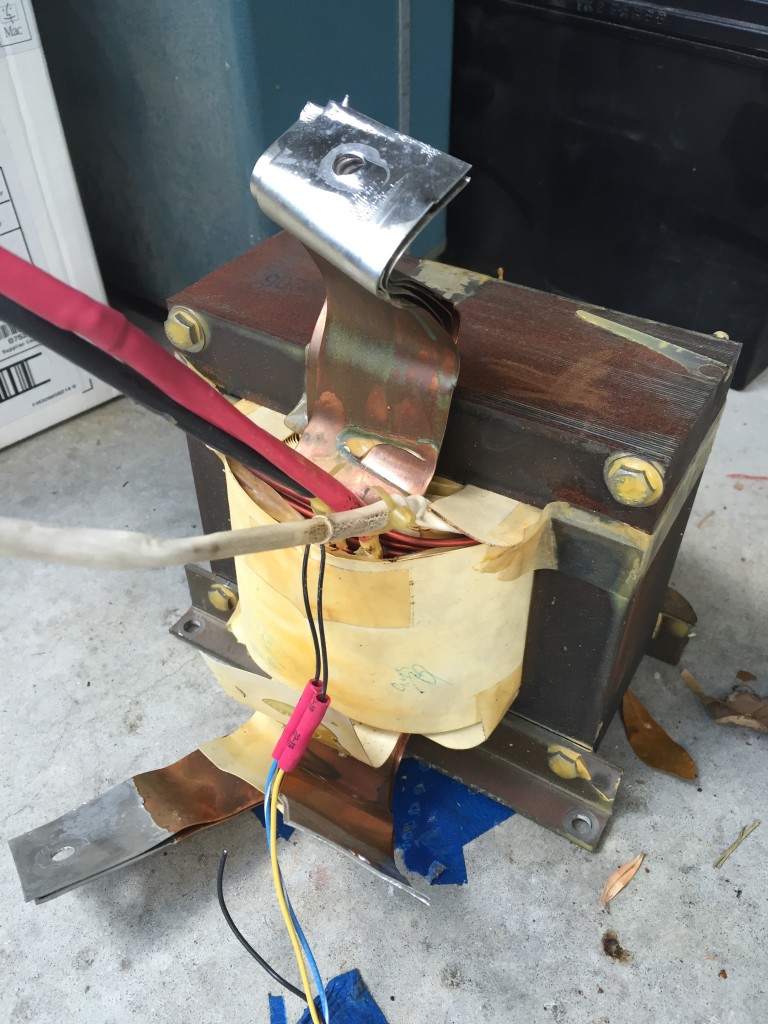
Selling Old Business Phones
Hi!
EBay pulled through this time! I think what I’ve learned is the weirder the better for eBay. I got these phones donated to me by a business that had upgraded to a VoIP system. Lots of people know that if they have e-scrap they should call me. When I got these phones I didn’t see any value in them what so ever. None. I figured I’d simply take them apart and see what was in them. Since I had so many of them, and taking apart things repetitively is boring I decided to check eBay to see if things like this were being sold. I saw that there was a niche market for used business phones so I made a listing. I set the starting bid to just cover shipping costs. I figured I take market value and I really just wanted to get rid of them. Well, come the end of the listing it was all the way up to $344! I couldn’t believe it. I packed them up and sent them off. I could have hand delivered them since the place that ordered them was a business telephone sales shop and they were about 35 min away. I decided against it because it simply wouldn’t have been fast enough and the shipping savings weren’t all that huge once you figured gas into the equation. Overall, a great score!
-Ben
Salvaging Silver from Scrap
Hello!
This calls for a miscellaneous post! I have been watching loads of online scraping YouTube videos. Particularly I like this one: www.youtube.com/watch?v=8oeg2DW1vAQ Basically in all electronic components that switch things on or off (switches, knobs, relays etc.) there are these little silver buttons or contacts as they are called. They are used as distribution points and are designed to take the “brunt force” when the initial spark is created when the circuit is closed. These eventually tarnish and oxidize and the AgO2 acts as a resistor albeit with a small resistance. This resistance causes heat which causes more silver to be oxidized and causes a positive feedback loop that eventually causes the relay to stop working. When this happens they need to be replaced. At work we do loads of work on marine inverters which use about 4-6 relays per inverter. We regularly have to change out relays. After so many cycles they are simply kaputt. Steve, my boss at work lets me take the boards home and smash open the relays and extract the silver buttons.
I have currently amassed about 200g of buttons. As soon as I collect more I will, providing my science teacher is receptive to the idea, put them in a HCl + H2O2 bath. Hydrochloric acid and hydrogen peroxide mixed together will eat away at all of the copper and other base metals. After a couple days, only silver will be left. I can then take this silver over to my propane torch and melt it. The melting temperature of silver is 1,763°F and a propane torch can get up to 3,623 °F. Yeah, that should do it >:) My molten silver syrup will be cast into an ingot. I will then be one home made silver ingot closer to world domination! Mwaaaaaaaahaha *cough* I mean I should be very exciting. Definitely a post on it when I get that far.
-Ben
Trying to Sell LORAN Circuitboards
Hello!
Just a quick post- I got these LORAN boards at work from Steve. He gave me about 30 of them. They are brand new and still in ESD pink bubble wrap. He said that he tried selling them to no avail. He gave me to do with them as I please. I tried listing them on eBay and got 0 interest. I think only 3 people even looked at the listing. Steve told be how LORAN used to be a GPS alternative until they (US Gov’t) abandoned the project. Seems like after that no one wants anything to do with LORAN. The US Government is trying to implement a new ELORAN program but so far its just a bill, sitting there on capitol hill 
Even if no one wants to buy them, they still have useable parts. Each one contains 2 EPROM chips with the quartz window and everything. I am thinking I could – maybe in the future store Bitcoin private keys in them. Although maybe thats not a great idea due to the volatility of EPROM. There is also a really nice 20Mhz oscillator on the board. Maybe I could use those for something one day.
-Ben
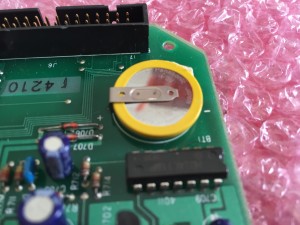
J-Pole Antenna
As you might know, I am an Amateur radio enthusiast. (KM4GPL) I got my license in December of 2014, so about five moths ago. I am currently studying to get my general class license. One of the things that I needed was an antenna for home.
As usual, the pictures of my build are below:
-Ben
Homemade 2×4 Desk
In my HAM Radio Update Update 1 post, I mentioned that I had converted a section of my room into a HAM radio shack. One of the first things that you need in a HAM shack is a worktable for doing your projects and storing your equipment. I had a very specific corner of my room in mind for my ham desk and after a trip to IKEA, I determined that there were no desks there that fit the space I needed. Most were way too big and some were too short. Instead, I decided on building my own desk. I would build the frame out of 2×4’s and the top would be MDF (Medium Density Fiberboard). After a quick run to the hardware store for the 2×4’s and some more long screws and paint, I was done gathering the materials. I assembled the frame and attached the MDF to act as the table portion. One of the main reasons that I chose to build the desk myself was because the space I wanted to fill was an irregular polygon (looked like a rectangle w/ a little square sticking off of it on the upper right side). Anyway, my idea was to build the table in two sections: one large rectangle and one small square. I would then join the rectangle to the square once the desk was in place. After building both sections of the desk, I sprayed them with multiple coats of blue spray paint. Unfortunately, the newspaper that I placed down to protect the surroundings from my beautiful shade of blue wasn’t big enough… oops.. sorry driveway :/ After I was done spraying the tables blue, I hit them with two coats of clear lacquer. After it was all dry, I screwed both pieces together and pushed them in place! Done! For about $25 in materials I made tables that would have cost about $200 – $250 in a retail store. I was pretty impressed with myself, albeit a bit upset that I had accidentally painted the driveway. Like I said before, if I could do anything over, I would pick a bit darker shade of blue for the tables, and not paint the driveway on accident.
As usual, the pictures are below:
-Ben
(Above is the desk in its final resting place. My ham equipment needs organization.)
Minecraft Wooden Chest
Minecraft! Who doesn’t love Minecraft? In case you haven’t heard of Minecraft (Hereinafter to be known as MC), MC is a single & multiplayer sandbox block based game. Your object is to survive and to build, construct, mine, farm, dig, fish or do just about anything else. In MC the primary place you store your items are in chests. Other people have created MC chests before, but they are either printouts that you print and then glue together or they are cheap Chinese pieces of plastic that don’t even look like real MC chests. The first picture below is a picture of chests in the actual Minecraft game and the second picture below is one of the printout and fold together chests that I mentioned earlier.
So with the background info out of the way, and also mentioning that MC is one of my favorite games, I set out to build my own MC chest. Out of real wood! This was a fairly recent project, done w/ my table saw, but before my electric sander :/ This project was completed around February of 2015.
If you have read the rest of my posts you’ll know that I built a trebuchet before that launched HDD’s across the road. The treb was taking up too much room just sitting there, sooo… sacrifice.. sacrifice.. sacrifice. I dismantled the treb, cut out the bad parts, ripped the 2×4’s into boards that were approx. 3/4″ x 3 1/2″. I then glued the boards together into rough sheets, planed them down with a hand plane, cut them to the right dimensions and glued and brad nailed them together. I then stained the entire thing and added the silver “lock” on the front. I added some feet to the bottom so it wouldn’t scratch and then it was almost done. I added some hinges and a chain to keep the lid from falling all the way open and now I can store anything from cash to papers to schoolwork in my homemade Minecraft chest made from recycled trebuchet wood!
As always below are the pictures from my build!
-Ben
Ham Radio Update 1
Twell, it’s time for a Ham radio update. I got my technician license in December of 2014, its April 2015 now. Since then, I have joined three Ham radio clubs, ARES, BARC, and MARCI. I have built myself my own J-Pole antenna (a very intensive build, a separate post w/ video on that soon.) I built myself my own Ham “shack” in my room, I even built the desk myself (more on that in another post soon). I have made a ton of friends, all of which are really nice. The other night I talked to a kid who was 14 and was visiting from Boston, MA. Every Tuesday night of the month I go to a Ham radio meeting. I hope to get on the board of directors at MARCI and I am building a brand new website for BARC (yep, another post on that too coming soon). Their old website looked (looks) like it came fresh out of the 80’s.
Anyway, thats all for now, more posts to come on all those projects!
-Ben
Poetry Out Loud 2015
Hahahah, this one is recent and is really funny. I never, and I repeat, never thought I would be good at poetry recitation. Something like that was better left to the people who like English. Now, in all honesty English isn’t my favorite subject and I prefer Math and Science exponentially more  Anyway, a yearly tradition for English class it that we all learn two poems and participate in the national Poetry Out Loud competition. I chose “Machines” by Michael Donaghy and “In the Desert” by Stephen Crane, both poems that I enjoyed. I memorized them both very well and went into the competition with no high hopes at all. I hoped to do average. Anyway, I emerged in second place, just 2 points behind the first place winner Dylan Caruso. I got a cool Poetry Out Loud T-Shirt (that my English teacher has me wear to school on casual day) and it turned out that after a series of unfortunate events Dylan left the school and had he left a week earlier I could have taken his place at the state competition. Maybe next year? We shall see. A local magazine, Sarasota Magazine, featured our event in one of their newsletters. The full story from their side can be found here: http://srqinsidethebrand.com/2015/02/04/srq-studios-hosts-poetry-out-loud-with-newgate-school/
Anyway, a yearly tradition for English class it that we all learn two poems and participate in the national Poetry Out Loud competition. I chose “Machines” by Michael Donaghy and “In the Desert” by Stephen Crane, both poems that I enjoyed. I memorized them both very well and went into the competition with no high hopes at all. I hoped to do average. Anyway, I emerged in second place, just 2 points behind the first place winner Dylan Caruso. I got a cool Poetry Out Loud T-Shirt (that my English teacher has me wear to school on casual day) and it turned out that after a series of unfortunate events Dylan left the school and had he left a week earlier I could have taken his place at the state competition. Maybe next year? We shall see. A local magazine, Sarasota Magazine, featured our event in one of their newsletters. The full story from their side can be found here: http://srqinsidethebrand.com/2015/02/04/srq-studios-hosts-poetry-out-loud-with-newgate-school/
Only one picture today and it is above. Make sure to checkout the link to SRQ Magazine’s article!
-Ben
Stocks
Hello! This was a project that a did two years ago (2012 or 13) for History Class. We were learning about early settlers of the US and we were supposed to do a project relating to the life of the early settlers. I asked my history teacher if I could build something and he agreed as long as it would pertain to the subject. So I built stocks which were used a punishment or humiliation in the town. So naturally, I put my mom in them  Below is a picture of her in the stocks and also a picture of me holding the top portion up. This was a fun project especially because I didn’t have very many tools at the time so it was a hand saw, a drill and a screwdriver for me. If I were to repeat this I would use a jigsaw to cut circular holes and sand everything smoothly. Either way, being able to lock anyone up was pretty fun!
Below is a picture of her in the stocks and also a picture of me holding the top portion up. This was a fun project especially because I didn’t have very many tools at the time so it was a hand saw, a drill and a screwdriver for me. If I were to repeat this I would use a jigsaw to cut circular holes and sand everything smoothly. Either way, being able to lock anyone up was pretty fun!
As usual, below are the pictures:
-Ben
(Me holding the stocks up.)
(Locked my mom up ;))
Reverse Geocache
Hello,
This post is part of my ongoing effort to update my website with my previous projects. This one was created in late 2013 as you can see from the pictures below. The above picture is a picture of my reverse geocache I made. The software aspect of this project was quite challenging as was the hardware aspect as well. First off, in order to explain what a reverse geocache is, it must be known what a normal geocache is. A geocache is a box or container ranging from pill bottle size up to five gallon bucket size, it is hidden and the coordinates of its location are posted online at geocaching.com. People then attempt to find it using their GPS and when found, they log their find online. This geocache works the opposite way in that the cache is always with you and the object of game is to bring it to a set of coordinates unknown to the holder. You simply press the button, the GPS then gathers your coordinates, parses the data and outputs you distance to the object. The most efficient way of solving the puzzle is to take three distance measurements and then to use triangulation to determine the final location. In the code (originally by someone else, I kept the GPS data parser and re-programmed the rest in C++ in Eclipse and then sent it to the Arduino) there is a user definable variable to change the valid final location radius. That allows you to set the final location as a park bench or even as an entire city. When the box reaches the final location, it displays “Access Granted” and rotates the servo, retracting a pin holding the box lid shut. There is a secret back door I added in case I needed to open up the box in a pinch, but thats secret and will remain in my brain. Overall this was a challenging project and if I could change something, I would stain the wood a dark brown (I still could…) and I would use a sturdier locking mechanism.
As usual, pictures with explanations are below. Live long and prosper. (Leonard Nimoy, *sniff sniff*)
Ben
(The welcome message displayed when first hitting the power button.)
(After displaying the welcome message, the Arduino uses the GPS to look for a signal from the orbiting satellites.)
(After acquiring the signal and parsing the data, the Arduino displays the distance from the target. Here we are 9 km away from the target.)
(Since we were 9 km away from the target, the Arduino prints “Access Denied” and doesn’t move the servo.)
(Here is a closeup of the servo and the pin used to lock the top of the case shut.)
(Here is all the hardware minus the servo. Bottom left blue thing is the Arduino w/ shield, above that and slightly to the left is the GPS module, above that the black rectangle is the battery case and above that the green PCB with the ribbon cable is the 16×2 LCD and above that is the blue backlit button.)
ASHRAE Meeting
Hello, I have a very interesting and coincidental story to tell. It all started with solar panels, a bank and a husband. In September of 2014 I really really really wanted us to put solar (PV) panels on our house. I had done all the research including gathering all the electric bills, calculating how many panels we would need, finding the inverter etc. After all that I called up the local PV solar installation company and arranged an in home visit. We went over my numbers and calculated the final cost with installation. The last step was paying for it. The total cost came out to around 30,000 dollars and since we didn’t have that kind of money laying around we would need a loan. The solar company rep and I did the math on a loan at a reasonable interest rate and we found that the monthly payments on such a loan would come out to save us money on electricity every month. (The added bonus of PV solar is that it helps you prepare for the coming Zombie Apocalypse) The last thing we needed to do was head down to the bank and get the loan. To make a long story short, the loan would have to be taken out against the house and there wasn’t enough equity left over the satisfy the bank’s 20-30% safety zone. So even though we couldn’t get the PV panels, the woman at the bank we worked with was impressed with my knowledge of electrical systems and PV and gave me her card and told me her husband was an HVAC engineer and I should email him. Well thats exactly what I did. His name was Ross Montgomery and I had a really interesting conversation with him and in the end he invited me to a meeting put on by his company, ASHRAE. ASHRAE is interesting because it is sort of a company that other companies join and they host networking an get-to-gether like events usually with cool speakers. ASHRAE is international and its members are mostly HVAC engineers. Anyway, I met lots of cool people and had a great time learning about another field of engineering. I think its fantastic when I meet other people who are complete strangers who are so nice and willing to teach me and help me. For me, the moral of the story is that having a good network of people is very important and necessary in order to function as a professional, no matter what you do.
Below are some pictures of the event as usual. They also put me in the Sarasota-Bradenton ASHRAE January 2015 newsletter!
Here is me in their newsletter!
This is me with Ray Patenaude, the speaker, he was talking to me about HVAC engineering and showing me some diagrams of poor insulation and poor HVAC systems.
This was Ross at the event. It was so nice of him to invite me and I had such a great time with him.
Solar Powered Phone Charger
Hi,
This was one of my more involved projects, taking about three months from original design idea to 10 finished products. This was a challenging project because it required not only making everything work, and work well, but it also required using parts and building it small enough it fit into an Altoids tin. After seeing a video on YouTube where someone built a solar powered phone charger from a small (5″ x 5″) solar panel and a battery powered USB charger, I decided I wanted to build something similar. The original design was just too bulky for me and caring around a box about the size of a tissue box seemed like a dumb idea, so I borrowed the Altoids tin idea from an entry in Make Magazine, where they built a “Mint Tin Amp” audio amplifier.
Batteries would be a good idea too, and after trying out some AAAs I decided they didn’t have enough storage capacity for me. Each AAA battery had a capacity of approx. 850 mAh so 850 x 2 is 1700 mAh total. Mili Amp Hours isn’t the best unit for dealing with this stuff so I converted mAh to Wh (Watt Hours) using an average voltage on the batteries of 1.1v (which is generous). We know that watt-hours = milliamp hours × volts / 1000 so 1700 mAh x 1.1v /1000 = 1.87 Wh. Not a whole lot. According to Wikipedia (The most trusted free encyclopedia 😉 the battery storage of an iPhone 5/s/c is 5.45 Wh. The magic goal here is to provide a full charge to an iPhone. Online, I found some beastly 3000 mAh rechargeable AAs. (They can be found here: http://www.ebay.com/itm/12x-Rechargeable-AA-3000mAh-1-2-V-Ni-MH-battery-BTY-cell-for-MP3-RC-Toys-Camera-/121426504174) Recalculating the storage of the new batteries gives us 6.6 Wh! Thats more then enough to fully recharge an iPhone 5/s/c.
After sorting out the battery situation, I turned to the solar panels. My requirements were: panels that fit in my tin, panels that were already coated in clear protectant, and lastly their peak voltage had to be above 1.5v. After lots of eBay browsing (eBay is by far the cheapest place for parts like this) I had found the perfect panel. I ordered twenty of them thinking I’d make 20 chargers, and also ordered some zener diodes for battery discharge protection and some pushbuttons.
After that I had to figure how to get the ~1.2v of the battery up to 5v for the phone’s USB charging cable. Again after searching eBay I came across a small prebuilt PCB that offered what I wanted, a simple 1.2v in and 5v regulated power out to a USB port. I ordered them up and when they got here and I tried them out by plugging in phone charging cable, and nothing. At first I thought they were broken, but then after some online research I found out that Apple products need about 2.7v on their data lines in order to even want to charge. The solution was to create a voltage divider with some resistors. I did a lovely job bodgeing the resistors to the charging circuit and low and behold, after that it worked like a charm.
Lastly, I cut holes in the Altoids tin, put electrical tape on the inside of the tin, so as not to short anything out, and started assembling them. The assembly process is quite tedious and takes about two hours per tin from start to finish. I had a great time building them and to recoup the costs of parts, I made extra chargers and sold them at school. People were very impressed with them and they would happily pay $40 for a small emergency phone charger. I made 9 chargers, and when all was said and done, I sold 7 of them and kept two for myself. If I ever want to make 10 more (I bought the parts for them) I could, but spending 20 hours repeatedly building the same thing get very tiering very fast.
In the end it was really fun and I learned lots for this project. I love being able to teach myself by giving myself challenges and then trying to solve them. When all was said and done, I had had a fun two months working on designing, ordering parts, and building this project and I also walked away with an $200 including cost of parts. People came to me telling me to turn this into a business, and it sounds like a great idea until you realize that you have to spend two hours per charger building it. Maybe one day I will turn it into a business and outsource labor and such, but for now, I am really happy that I just had a fun time doing it.
Here are some pictures of the Altoids Phone Charger:
Here is a view from the outside. The red button is the charge button, press it to send power to the USB port.
Here is an inside view of the charger. Notice that the solar panel fit just barely into the tin.
Here is a closeup view of the electronics. I used a lot of hot glue to keep everything in place. Notice the resistor voltage divider on top of the USB board. If you look right below the edge of the solar panel you can see the diode soldered directly to the battery.
Here the charger is charging up an iPhone 6. With the iPhone 6’s huge battery, it won’t charge it fully but it comes close. Definitely enough juice to call people in an emergency or find your way home when your lost.
United Systems Internship
Hi,
About two weeks ago, from January 12th to January 16th, I held an internship with United Systems. United Systems is an IT management company. This internship was part of an internship program that my school has. They give you the time off from standard school to go out and experience the workplace in field that you are interested in. I contacted United Systems and asked them if they would have an intern for a week. They said that they normally don’t accept interns under the age of 18, however, because I already had experience and knowledge in that area they would accept me. It was a fantastic week and below is a powerpoint of what I did all week.
Here is the powerpoint:
I had a great week and Chris, the manager at United Systems wrote me an awesome letter of recommendation!
Electronic Slot Game
Hi,
This is part of a series of posts adding old projects that I have done years ago on to my website. Soon everything should resume chronological order.
About 4-5 years ago I saw a post in Make magazine about someone who had come up with some sort of slot game idea. They had a very small article, with about one or two paragraphs of info on this game idea, and I thought it looked interesting.
After a trip to the hardware store and a trip to RadioShack (argh, I know, I still face palm thinking about how I used to use Radio Shack) I had most of the parts. I made the slots in the wood with an normal sheet metal drill bit (the days before I had a jigsaw) and attached the L brackets. Then I wired everything up. I used a two pole six position rotary switch (RS still sells them here http://www.radioshack.com/radioshack-2-pole-6-position-rotary-switch/2750034.html) and wired up six different winning combinations. (If you look at the picture below, you’ll see I used magnet wire to make all the connections… ugh, If only I had known) I finished up by painting the wood blue and yellow and added a couple of LED’s and a switch.
So, here’s how you play the game:
You bet four quarters ($1) and place them between the L brackets. This completes part of a circuit, once you have placed all four quarters, you flip the switch and if the red LED lights, you loose. If the green one lights, you win and get $100. (The odds are of course in the house’s favor.) The rotary switch allows you to select between six preset combinations, that way if one person wins, the next person doesn’t copy their pattern.
Here are some pictures:
(View of inside wiring)
(Rotary switch box)
(Top view, quarters go in between those brackets)


